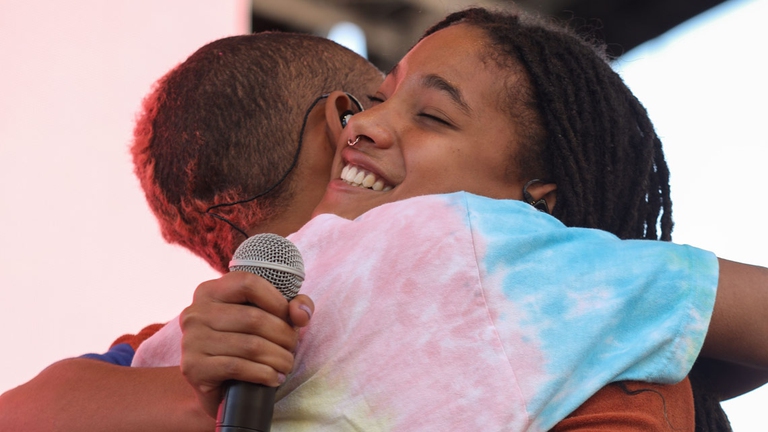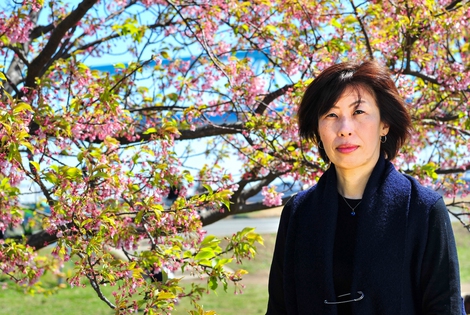
Three people putting the protection of the planet before themselves. Three powerful stories from Latin America, the deadliest region for environmental activists.
Greta Thunberg and hundreds of thousands of young activists, together with many adults, poured onto the streets of New York City to strike for the climate on 20 September. One of the largest mobilizations for climate action in history was an intergenerational call to fight for the planet.
More than 250,000 people marched through the streets of Manhattan for the New York climate strike on September 20th. It is the largest climate mobilization ever, not only for the United States (with more than 500 strikes organized across its territory) but also globally: more than 4 million people have striked in more than 161 countries and 5000 locations around the world.
September 20th was chosen as a key date, as it is the Friday before the UN climate action summit where Greta Thunberg will speak. “That’s why the city of New York is so important in this strike and that’s why Greta came to New York. She came to speak at the UN summit,” Xiye Bastida, a 17-year-old who will be at the UN with Greta and other young activists, told us in an interview.
However it is not only Greta’s presence, or the incredible turnout that makes this strike special. It is the first time that the movement also involves adults. For the first time since Greta Thunberg began to protest in front of the Swedish Parliament last year, strikes today have involved adults who also marched for the climate together with hundreds of thousands of young people. The importance of this strike was its intergenerational character.
“The 20th of September is special because we wanted intergenerationality. We are not saying, ‘it was your fault’. We are saying that we are aware of what is happening and we need you, because you have voting power, you can use democracy to save our future,” says Xiye Bastida during the interview.
This is one of the reasons why the strike also included a voter registration drive for youth who are turning 18. More than 10,000 youth have registered to vote in battleground states in just two weeks.
Il corteo della marcia per il clima a New York visto dall’alto, 20 settembre © Stella Levantesi / LifeGateA spokesperson for Fridays for Future New York also said: “While led by youth, with an emphasis on our imperiled future, this march will be multigenerational and multiracial; only through genuine collective action can we deliver the systematic changes we need to save our present and our future. Adults have the voting power, but we all have a responsibility to make our voices heard.”
Together with Fridays for Future, hundreds of thousands of activists gathered in the morning in Foley Square (in Manhattan’s Financial District) with colorful banners, earth-like balloons and protest signs reading slogans such as “no planet B”.
An unstoppable river of people meandered through the streets of the Financial District. The march involved children, young people and adults as it flowed in between the austere buildings to the rhythm of chants and reached the delta of Battery Park, where a stage and a big screen were set up. The afternoon was marked by musical performances, poem readings, activist speeches and, last but not least, the presence of the one person everyone was waiting to see on stage: Greta Thunberg, welcomed like a star by a screaming crowd and the deafening chant of “Greta, Greta, Greta”!
When they reached Battery Park, the activists flooded the large lawn to watch the show on stage. After about an hour of reggaeton music blasting loudly from the speakers, the first performers arrived on stage. Amongst them, youth from Fridays for Future, the official organizers of the strike, and then the Peace Poets, hip hop music artists who sing of peace, solidarity and respect for the earth to the rhythm of rap. During their performance, one of the Peace Poets shouted to the audience: “We are following the example of indigenous people who have been striking for the climate for hundreds of years”! September 20th was also the second anniversary of Hurricane Maria, which nearly wiped out the island of Puerto Rico in 2017. The strike amplified voices of indigenous peoples and also of representatives of those front line communities that have directly been affected by climate change.
Under a hot September sun, two artists who are extremely popular among American teenagers also performed on stage: Jaden Smith and his sister, Willow (Will Smith’s kids). The audience went wild singing, shouting and echoing the chant “heal the world”. In the late afternoon, because of the heat, dehydration and the packed crowd some people felt sick or fainted and the speakers on stage had to interrupt themselves to alert the medics. But even this did not discourage the crowd from remaining till the end to listen to Greta.
“Why should we study for a future that is being taken away from us? Some people tell us that we should study to become scientists and work to solve the climate crisis, but it will be too late at that point. We have to do this now. We didn’t get out on the street or sacrifice our education for the adults and politicians to take selfies with us and tell us that they ‘really really admire what we do’”, says Greta in her speech to the audience.
But if one part of the strike was festive and lively, another one is serious and challenging. The demands of the New York strike are the following: no to fossil fuels, a just transition to renewable energy, justice for front line communities and making the world’s largest polluters pay.
The strike of the 20th, which officially opens the global climate week (ending on the 27th with other global strikes), is not “just another strike”, says Xiye, it is special because it represents the infamous tipping point.
From a scientific point of view, exceeding the threshold of 1.5 degrees of global warming will be a point of no return. So the goal is to reduce carbon emissions by 2030. In terms of the climate movement, 20th September is a turning point. Young people have embarked on the fight against climate change and they are not turning back.
“I know activists from all over the country, we come from all over the world and we don’t want to stop,” Xiye continues energetically. “I will never not want my children to grow up on a safe and healthy planet. This is a point of no return because we are not in it for a week or two, but we will work until we change the system and until we reach the positions necessary where we can do it ourselves.”
And it really is a tipping point. It has to be, if we have come this far to protect the earth, our planet, our home. It has to be if it has come to the point where we need a movement to save the earth. Shouldn’t it be our natural duty to want to take care of what gives us life, protection, nourishment and survival?
It’s not just the young (and not so young) activists who are on strike this week. More than 2,000 scientists from about 40 countries signed letters committing themselves to the global climate strikes on the 20th and 27th of September. Scientists urged their colleagues around the world to cancel lectures, move them outdoors or turn them into courses for the whole community. They vowed to leave research labs and join young activists in the streets. New York City’s school district, which includes more than a million students, also helped the movement. Exclusively for the occasion of the strike, permission was granted to the students to skip school.
However, it’s not just about numbers: 4 million people marching on the streets around the world represent a demand for collective climate justice, even though climate change has led to a crisis that goes far beyond the environmental aspect alone. Yet in this case, numbers also help to demonstrate that not only is this the greatest climate mobilization in history but also that adults are perhaps finally ready to follow the youth’s leadership, to follow their example of determination and, in this common path, to stop at nothing.
Siamo anche su WhatsApp. Segui il canale ufficiale LifeGate per restare aggiornata, aggiornato sulle ultime notizie e sulle nostre attività.
![]()
Quest'opera è distribuita con Licenza Creative Commons Attribuzione - Non commerciale - Non opere derivate 4.0 Internazionale.
Three people putting the protection of the planet before themselves. Three powerful stories from Latin America, the deadliest region for environmental activists.
Influential scientist, activist and author Vandana Shiva fights to protect biological and cultural diversity, and against GMOs.
Kimiko Hirata has blocked 13 new coal plants in Japan, but she hasn’t done it alone. The 2021 Goldman Prize winner tells us about her movement.
The Goldman Environmental Prize, the “green Nobel Prize”, is awarded annually to extraordinary activists fighting for the well-being of the planet.
We talk to Shaama Sandooyea, activist and marine biologist from Mauritius onboard Greenpeace’s Arctic Sunrise ship in the heart of the Indian Ocean.
Arrested for supporting farmers. The alarming detention of Disha Ravi, a 22-year-old Indian activist at the fore of the Fridays for Future movement.
Water defender Eugene Simonov’s mission is to protect rivers and their biodiversity along the borders of Russia, China and Mongolia.
Chibeze Ezekiel, winner of the 2020 Goldman Environmental Prize for Africa, is fighting to guide new generations towards a renewable future.
Leydy Pech, winner of the 2020 Goldman Environmental Prize for North America, is the beekeeper who defended Mexican Maya land against the agro-industry.
















